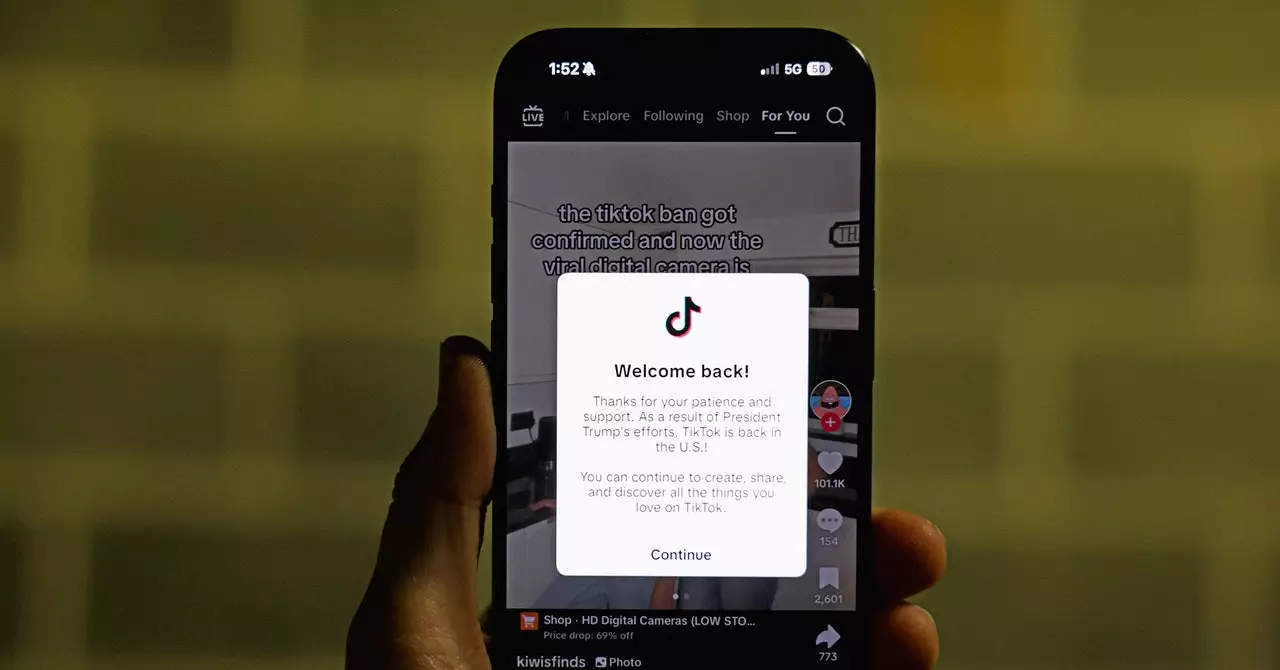The saga of TikTok’s tumultuous relationship with the United States continues to unfold, revealing the intricate dance between technology, politics, and public sentiment. After a 26-day hiatus from U.S. app stores, the Chinese-owned video-sharing platform made its return to both the iOS App Store and Google Play. This article examines the factors that contributed to TikTok’s re-emergence, the political undertones shaping its fate, and the implications for users and competitors alike.
The background of TikTok’s absence dates back to the Protecting Americans From Foreign Adversary Controlled Applications Act (PAFACA), which established the legal foundation for the ban. Under this law, American tech companies faced potential fines for distributing, maintaining, or updating any apps developed by ByteDance, TikTok’s parent company. This stipulation created a precarious situation for tech giants like Apple and Google, who initially complied with the ban by removing TikTok and several other related apps from their platforms, effectively shutting out new users from accessing the popular service.
The legislation emphasized rising concerns over national security, reflecting bipartisan apprehensions regarding foreign influence in American technology. These concerns were amplified by ongoing geopolitical tensions between the U.S. and China, leading to a climate in which platforms like TikTok found themselves entrenched in political disputes.
In a dramatic twist, TikTok’s fortunes changed when U.S. Attorney General Pam Bondi delivered a letter to Apple and Google, reassuring them that they would not face penalties for allowing TikTok to return. This guidance came shortly after the inauguration of President Donald Trump, whose administration opted to take a more lenient stance on the app. In one of his initial executive orders, President Trump instructed the Attorney General to refrain from enforcing the Act for 75 days, granting his administration time to explore possible resolutions.
This shift in tone was not just bureaucratic maneuvering; it highlighted the dynamic interplay between tech, governance, and public opinion. As TikTok’s situation shifted from a near-complete shutdown to a tentative recovery, it highlighted the multifaceted nature of digital platforms and their capacities to navigate political landscapes.
While TikTok was unavailable, user experiences were significantly diminished. Individuals attempting to download the app encountered messages indicating the ban, while competitors experienced an uptick in usage as users sought alternatives. This period of exclusion not only disrupted TikTok’s market presence but also opened the door for rival platforms to capture audiences that might have otherwise engaged with TikTok.
The brief hiatus called attention to users’ reliance on social media for entertainment and connection. It underscored a dependency that many had possibly taken for granted, raising questions about how quickly loyalty can shift in the face of new options. As soon as TikTok re-entered the marketplace, it did so under the shadow of its recent ban, prompting users to consider not just the platform’s offerings but also its precarious standing in the U.S. political landscape.
Looking ahead, TikTok’s fate in the United States remains uncertain, tethered to the evolving political landscape and ongoing dialogues about national security. Currently, PAFACA allows the president to extend the ban for an additional 90 days, depending on the perceived progress in negotiations regarding the sale of the app to a non-Chinese entity. Reports suggest that negotiations could involve major players like Oracle, presenting a scenario where TikTok’s ownership may shift to alleviate governmental concerns.
The specter of regulatory oversight extends beyond TikTok. With clear indicators that legal frameworks governing technology may tighten further, tech companies might face an array of challenges. Stakeholders may need to establish more robust compliance frameworks to operate in an increasingly scrutinized environment.
TikTok’s re-entry into the U.S. app ecosystem is symbolic of a larger struggle involving technology and governance. The outcome of this saga will undoubtedly influence not only TikTok’s trajectory but also the broader tech landscape and its relationship with geopolitical boundaries. Whether it finds a permanent place in the digital hearts of users remains to be seen, as the app navigates the complex interplay of compliance, competition, and consumer loyalty.

